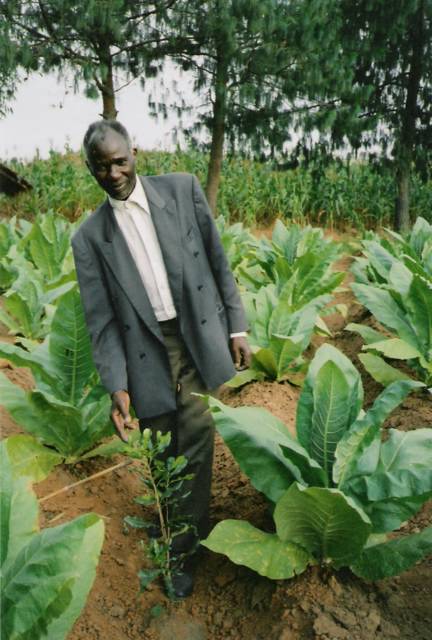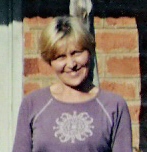February 26, 2005
MACADAMIA PROJECT
As mentioned a few times previously, it was my forestry counterpart, Mr. K. Ng’ambi, who demonstrated the first interest in macadamia which spurred me to look into it, and once begun, it was greeted with reasonable enthusiasm from the community. But, our first issue at hand was to become self-sustaining in the generation of planting material, so you could really say that this project was about nursery work, the precursor to any orchard development.
Suitability of region
It turned out that our local climate was "suitable" for macadamia. In the warmer tropics it is often grown in the highlands, and in Chisenga we sat at about 1500 meters. It wants a minimum of 1000 mm of annual rainfall, and prefers it evenly spaced, which explains why it was doing so well in those drippy places like Mzuzu and Nkhata Bay. The zones in Chitipa were these: along Mafinga Hills, the highlands of Wenya, and Misuku Hills.
Previous programs forgotten
It turned out a few trees did exist from previous programs (>10 years ago). There were old "bushes" in Chisenga, these were stunted unproductive trees, and though in the ADD orchard, left unmanaged. There were also trees in Misuku, behind the Agriculture Station. These were reasonably looked after and producing a crop which was promptly stolen by local children. None of these trees were tagged as to cultivar type.
Getting knowledge on macadamia
I set out to get knowledge about macadamia from Lunyangwa Agricultural Research Station. I met Mr. J.R. Nyirenda, a sociable and helpful fellow, responsible for all nut tree crops. I learned the basics of propagation and nursery work from him and practically wrote a small book about it right on the spot, knowing I would have no access to computer, library, or any other source once back in Chisenga. A more apt and annoying pupil he could not have found.
Setting out to get seeds
On my second visit to Lunyangwa, I hoped to acquire seeds, as Mr. J.R. Nyirenda had told me this was the season of harvest. First, I had to hunt down J.R., then J.R. and I had to hunt down the nurseryman. We walked across crop fields to check at his home. Not there. We were informed he was at his farm so we walked over. Not there. We turned to go as someone yelled at us from the top of the next hill, “He’s coming, wait.” After some time he appeared over the horizon and made his way to us. The sun was beating down on my head; I was hot and hadn’t had a drop of water. It always worked this way – me in the middle of a field somewhere, hatless, persevering. Often a small task could consume a whole day.
Seeds got
My patience paid off. The nurseryman had seeds. He had actually planted them that morning and dug them up for me. I carried away some 200 seeds in a bag with wet sand, elated. Now I had to get the seeds back to Chisenga and I left the following day by my normal mode of transport: minibus to Karonga, loaded lorry Karonga to Chitipa, then back of a pickup to Chisenga. On the third day I arrived in Chisenga.
Seeds planted – lessons learned
The farmers though they were forewarned to be ready to plant the seeds, where hardly prepared at all. I had to do individual training and my counterparts were just learning at that time. Still we got them planted within the week. Being our first attempt, I figured we were poised to learn a great deal - and we did. Our germination rate was abysmal, around 20-25%. There were two main issues contributing to this: 1) The initial seeds were probably not that fresh, 2) the farmers planted them at their homes and thus it was hard to maintain quality control.
Lessons implemented
The second year we reorganized into 4 nursery sites (1 in Chambo, 1 in Bugulira, and two in Misuku Hills). In this new system, the farmers worked cooperatively at the centralized nursery sites, enabling us (the extension workers) to supervise the quality of the work. The seed beds had been redesigned for greater drainage and the work was well carried out in advance. The seeds at Lunyangwa had all been stolen by small children, so I went to Kawalazi Estate in Nkhata Bay. That was simply amazing, they have 8000 hectares almost completely dedicated to growing macadamia. The division director dropped what he was doing and escorted me out to collect seeds. I even got transport in the Peace Corps vehicle all the way up to Chisenga (that was reason enough to celebrate). That year we achieved better than 90% germination rate.
Suitability of region
It turned out that our local climate was "suitable" for macadamia. In the warmer tropics it is often grown in the highlands, and in Chisenga we sat at about 1500 meters. It wants a minimum of 1000 mm of annual rainfall, and prefers it evenly spaced, which explains why it was doing so well in those drippy places like Mzuzu and Nkhata Bay. The zones in Chitipa were these: along Mafinga Hills, the highlands of Wenya, and Misuku Hills.
Previous programs forgotten
It turned out a few trees did exist from previous programs (>10 years ago). There were old "bushes" in Chisenga, these were stunted unproductive trees, and though in the ADD orchard, left unmanaged. There were also trees in Misuku, behind the Agriculture Station. These were reasonably looked after and producing a crop which was promptly stolen by local children. None of these trees were tagged as to cultivar type.
Getting knowledge on macadamia
I set out to get knowledge about macadamia from Lunyangwa Agricultural Research Station. I met Mr. J.R. Nyirenda, a sociable and helpful fellow, responsible for all nut tree crops. I learned the basics of propagation and nursery work from him and practically wrote a small book about it right on the spot, knowing I would have no access to computer, library, or any other source once back in Chisenga. A more apt and annoying pupil he could not have found.
Setting out to get seeds
On my second visit to Lunyangwa, I hoped to acquire seeds, as Mr. J.R. Nyirenda had told me this was the season of harvest. First, I had to hunt down J.R., then J.R. and I had to hunt down the nurseryman. We walked across crop fields to check at his home. Not there. We were informed he was at his farm so we walked over. Not there. We turned to go as someone yelled at us from the top of the next hill, “He’s coming, wait.” After some time he appeared over the horizon and made his way to us. The sun was beating down on my head; I was hot and hadn’t had a drop of water. It always worked this way – me in the middle of a field somewhere, hatless, persevering. Often a small task could consume a whole day.
Seeds got
My patience paid off. The nurseryman had seeds. He had actually planted them that morning and dug them up for me. I carried away some 200 seeds in a bag with wet sand, elated. Now I had to get the seeds back to Chisenga and I left the following day by my normal mode of transport: minibus to Karonga, loaded lorry Karonga to Chitipa, then back of a pickup to Chisenga. On the third day I arrived in Chisenga.
Seeds planted – lessons learned
The farmers though they were forewarned to be ready to plant the seeds, where hardly prepared at all. I had to do individual training and my counterparts were just learning at that time. Still we got them planted within the week. Being our first attempt, I figured we were poised to learn a great deal - and we did. Our germination rate was abysmal, around 20-25%. There were two main issues contributing to this: 1) The initial seeds were probably not that fresh, 2) the farmers planted them at their homes and thus it was hard to maintain quality control.
Lessons implemented
The second year we reorganized into 4 nursery sites (1 in Chambo, 1 in Bugulira, and two in Misuku Hills). In this new system, the farmers worked cooperatively at the centralized nursery sites, enabling us (the extension workers) to supervise the quality of the work. The seed beds had been redesigned for greater drainage and the work was well carried out in advance. The seeds at Lunyangwa had all been stolen by small children, so I went to Kawalazi Estate in Nkhata Bay. That was simply amazing, they have 8000 hectares almost completely dedicated to growing macadamia. The division director dropped what he was doing and escorted me out to collect seeds. I even got transport in the Peace Corps vehicle all the way up to Chisenga (that was reason enough to celebrate). That year we achieved better than 90% germination rate.



